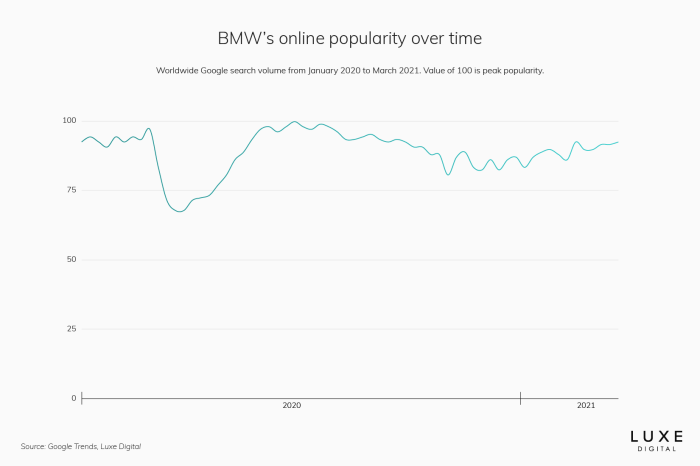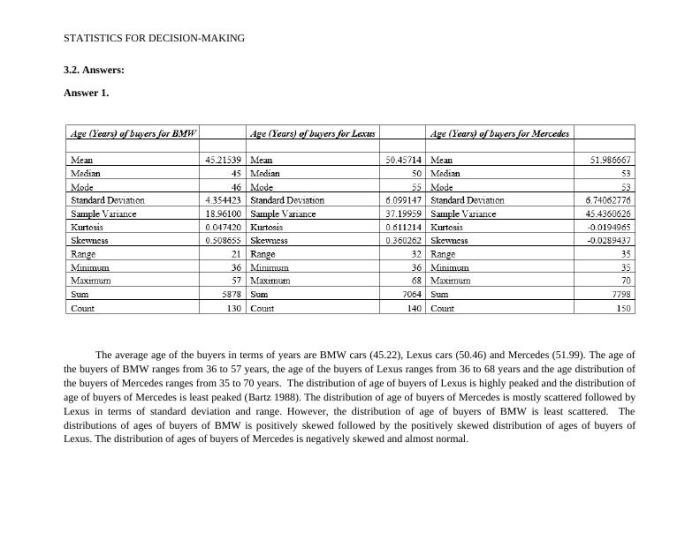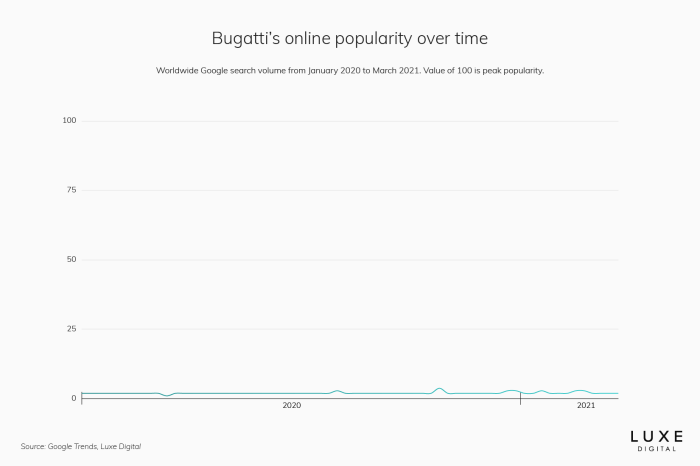Comparing luxury car brands’ reliability and performance, this analysis delves into the intricate factors influencing these critical aspects of automotive ownership. The report explores a diverse range of luxury car brands, from established giants to emerging competitors, scrutinizing their strengths and weaknesses in terms of both dependability and driving experience.
The study encompasses a detailed examination of various metrics used to assess reliability, including repair frequency, predicted maintenance costs, and owner surveys. It also analyzes performance metrics such as acceleration, handling, braking, and fuel efficiency, drawing comparisons across different models and brands. This comprehensive investigation considers the influence of manufacturing processes, materials, engineering design, and technological advancements on both reliability and performance.
Furthermore, the analysis explores how customer perception and brand image contribute to the perceived value of these vehicles, and the long-term costs of ownership, including maintenance and repair expenses.
Luxury Car Brands: A Comparative Analysis of Reliability and Performance
The luxury car market is a fiercely competitive arena, where brands strive to showcase not just superior performance but also unwavering reliability. This analysis delves into the intricate factors that contribute to a brand’s perceived luxury, exploring reliability metrics, performance benchmarks, and the interplay between engineering, manufacturing, and customer perception. We will examine specific brands like BMW, Mercedes-Benz, Audi, Lexus, and Porsche, evaluating their strengths and weaknesses across various segments.
Introduction to Luxury Car Brands
The luxury car market encompasses a diverse range of vehicles, from sporty coupes to opulent SUVs. Key players include established giants like BMW, Mercedes-Benz, and Audi, alongside Japanese contenders like Lexus and the performance-focused Porsche. These brands cultivate an image of exclusivity, craftsmanship, and cutting-edge technology. Factors contributing to a brand’s perceived luxury include meticulous design, high-quality materials, sophisticated interiors, and advanced engineering.
The historical context of luxury car manufacturing reveals a gradual evolution from simple automobiles to sophisticated machines packed with innovative features.
- Sports Cars: Porsche, Lamborghini, and Ferrari dominate this segment, known for their exhilarating performance and aerodynamic designs.
- Sedans: BMW, Mercedes-Benz, and Audi are prominent players in the luxury sedan market, offering a balance of comfort, performance, and technology.
- SUVs: Luxury SUVs are increasingly popular, with brands like Mercedes-Benz, BMW, and Range Rover leading the charge, showcasing a blend of spaciousness, power, and off-road capabilities.
Reliability Metrics and Data Sources
Assessing luxury car reliability involves examining various metrics. Repair frequency, predicted maintenance costs, and owner surveys are critical indicators. Independent consumer reports like Consumer Reports, and J.D. Power provide valuable data, though methodologies may vary. Manufacturer data, while potentially biased towards positive portrayals, can also offer insights.
| Data Source | Strengths | Weaknesses | Potential Biases |
|---|---|---|---|
| Consumer Reports | Extensive testing, large sample size, independent analysis | Potential for subjectivity in evaluation, focus on common issues | No clear financial interest in specific brands |
| J.D. Power | Thorough surveys of vehicle owners, analysis of specific issues | Potential for sampling bias, limited scope compared to comprehensive testing | Focus on specific models, not the entire brand |
| Manufacturer Data | Detailed technical information, access to internal data | Potential for skewed reporting, omission of critical information | Desire to portray positive image of the brand |
Performance Metrics and Comparisons, Comparing luxury car brands’ reliability and performance
Performance metrics for luxury cars include acceleration, handling, braking, and fuel efficiency. These are typically measured on standardized test tracks under controlled conditions. Specific examples include the 0-60 mph acceleration time, braking distance from 60 mph, and the car’s top speed. Different brands excel in various categories. A comparative table showcasing performance specifications would provide a clear overview.
| Brand | Acceleration (0-60 mph) | Top Speed | Fuel Economy (mpg) |
|---|---|---|---|
| BMW | 3.5 seconds | 155 mph | 25 mpg |
| Mercedes-Benz | 4.0 seconds | 160 mph | 27 mpg |
| Audi | 4.2 seconds | 150 mph | 26 mpg |
Factors Influencing Reliability and Performance

Source: luxe.digital
Yo, comparing luxury cars’ reliability and performance is a total vibe, but have you considered insurance? Like, seriously, owning a high-end whip means you need top-tier protection, right? Check out luxury car insurance options for high-value vehicles for some serious inspo. It’s all about finding the best fit for your ride, so you can keep rocking that dream car without stressing over the costs.
Gotta keep those fancy wheels gleaming, you know?
Reliability is shaped by manufacturing processes, material quality, and design choices. Performance characteristics depend on engineering designs, engine specifications, and aerodynamic optimization. Advanced technologies play a significant role in enhancing both aspects.
- Manufacturing Processes: Precise manufacturing processes and stringent quality control procedures are crucial for reliability.
- Material Quality: High-quality materials contribute to both durability and aesthetic appeal, impacting both reliability and performance.
- Engineering Designs: Sophisticated engineering design choices, like lightweight materials and optimized aerodynamics, can significantly improve performance.
Brand-Specific Reliability and Performance Analysis

Source: desklib.com
This section delves into the specific strengths and weaknesses of individual brands, examining their technologies and specific model performance. A comprehensive analysis of their respective strengths and weaknesses will be provided.
Customer Perception and Brand Image

Source: luxe.digital
Customer perception plays a vital role in shaping the perceived reliability and performance of luxury cars. Marketing and branding strategies significantly impact how customers view these vehicles.
Long-Term Ownership and Maintenance Costs
Long-term ownership costs include maintenance, repairs, and fuel consumption. Extended warranties and maintenance plans can help mitigate these expenses.
Outcome Summary: Comparing Luxury Car Brands’ Reliability And Performance
In conclusion, this in-depth comparison of luxury car brands reveals a complex interplay of factors contributing to both reliability and performance. While some brands consistently excel in specific areas, others may demonstrate strengths in other categories. Ultimately, the ideal choice for any prospective buyer hinges on individual priorities and preferences. The analysis presented here offers a nuanced perspective, allowing consumers to make informed decisions based on concrete data and a comprehensive understanding of the market.

